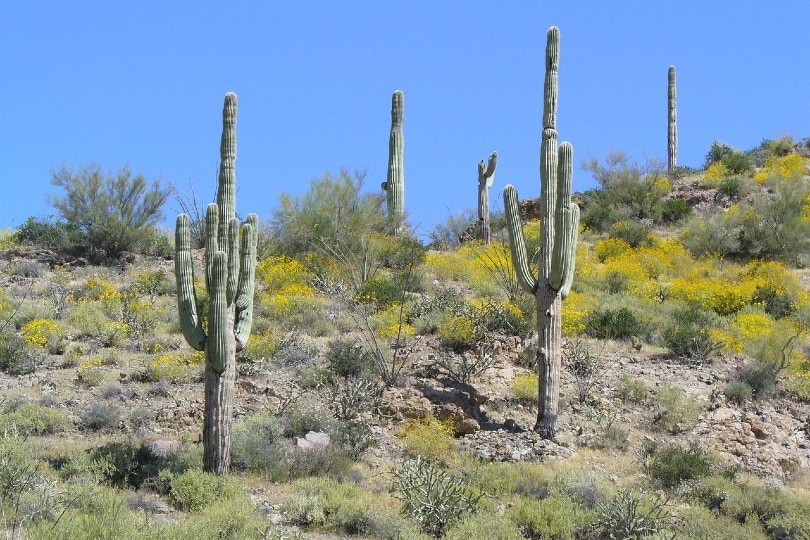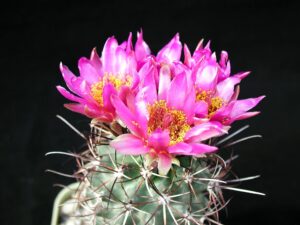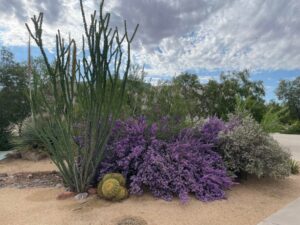Ever gazed at a towering saguaro cactus and wondered, “Just how old is that majestic giant?” It’s a playful question that might cross the minds of many who encounter these green titans of the desert. Estimating the age of a saguaro cactus isn’t a mere whim; it can present quite a challenge. Despite their iconic status, such estimations require a blend of botanical insight, environmental understanding, and a sprinkle of good fortune. Let’s delve into the expert methods that botanists and enthusiasts alike employ to determine the age of these fascinating flora.
Though a saguaro can grow to be over 50 feet tall and may live for over 150 years, deciphering their exact age isn’t straightforward. Factors such as growth conditions and water availability create a tapestry of influences that affect growth rates. In this journey, we will explore measuring techniques and the inherent challenges involved in estimating saguaro age.
Understanding the growth rate of a saguaro cactus provides a foundation for age estimation. This growth is not uniform; under optimal conditions, a young saguaro may grow up to 1.5 inches a year. However, in harsh environments, their growth could dwindle significantly. This inconsistency forms the crux of the challenge. How can one pinpoint an exact age when every specimen might have a unique story?
One of the most commonly utilized methods for estimating the age of a saguaro is through physical measurement.
**Height as a Growth Indicator**
One may begin with the height of the cactus. For every foot of height, it is often estimated that the saguaro is around 10 to 15 years old, depending on the aforementioned growth conditions. This approach, while practical, presents its own set of variables. Environmental conditions can significantly accelerate or decelerate growth. A saguaro in a hospitable location will differ markedly from one struggling for survival in arid terrain. Thus, while a rough estimate can be achieved through height, for accuracy, one must consider individual growth contexts.
**Examining the Arms**
An intriguing fact is that saguaros typically begin to grow arms when they reach around 50 years of age. As such, the presence of arms can be indicative of a certain age threshold. A saguaro with multiple arms might be several decades old, but again, the environmental impact remains critical. Stress factors, such as drought or disease, can hinder arm formation, which could lead to miscalculations in estimating age. It thus becomes vital to cross-reference several indicators rather than relying solely on a single characteristic.
Now, for those seeking a more precise approach, scientists have developed deeper analyses.
**The Core Sampling Method**
One sophisticated technique employed by botanists is the core sampling method. This involves drilling a small hole into the cactus to extract a core sample of the inner tissue. By studying the growth rings in this core—much like one would do with a tree—scientists can gain insights into the cactus’s age. Each ring corresponds to a year of growth; however, this method necessitates a delicate balance. The saguaro’s vascular system must be unharmed to protect its health, requiring specialized tools and expertise. Moreover, caution is paramount as improper core sampling can jeopardize the longevity of the cactus itself.
Despite its accuracy, core sampling is invasive and not feasible for all scenarios. Indeed, for those who prefer a non-invasive route, innovative alternatives are on the rise.
**Remote Sensing Technologies**
With the advent of technology, remote sensing is becoming an invaluable tool in botany. Advances in aerial imaging and satellite technology allow scientists to study cacti populations from above. Using spectral analysis and image processing, researchers can assess health, growth patterns, and even approximate age without actual contact. This approach combines ecological insights with technological prowess, creating a future where invasive methods may soon be relics of the past. However, the accuracy of remote methods still faces scrutiny, particularly concerning age predictions, emphasizing the need for grounded, multi-faceted approaches.
Throughout these methodologies, one must appreciate the broader ecological picture. Saguaros thrive in their ecosystems, contributing to the habitat in which they reside. Their age is a reflection of environmental history—periods of drought, flood, and everything in between. Understanding these factors not only enriches the accuracy of our age estimations but also deepens our appreciation for their resilience.
In summary, while height and arm development can offer ballpark figures, they do not provide the whole story. Core sampling allows for a more scientific approach but requires precision, while remote sensing offers an exciting glimpse into the future of botanical research. Whatever method one chooses, each is a testament to the wonders of nature and the intricate processes of life. So next time you stand before a saguaro cactus, take a moment to ponder its history and the methods we employ to connect with this living monument. It’s a reflection of time itself, both challenging and enriching, just awaiting our discovery.





Leave a Comment